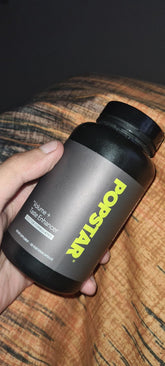Penis girth refers to the circumference or thickness of the penis, a key aspect of male sexual health that can influence confidence, comfort, and overall sexual satisfaction. In this comprehensive guide, we will explore what penis girth means, why it matters, how to measure it, factors that influence it, and answers to frequently asked questions. Our focus is to provide technically accurate, NLP-friendly information that is also engaging for readers seeking clarity and deeper understanding.
Table of Contents
- Definition and Understanding Penis Girth
- Why Penis Girth Matters
- How to Measure Penis Girth
- Factors That Influence Girth
- Average Penis Girth: What Studies Show
- Ways to Address Penis Girth
- Frequently Asked Questions
- A Note on Penis Girth and Health
- References
Definition and Understanding Penis Girth
Penis girth is a term used to describe the circumference of the penis, whether flaccid or erect. While many discussions about male anatomy focus primarily on length, girth is equally significant for a variety of reasons. The penis comprises several internal chambers, such as the corpora cavernosa and the corpus spongiosum, which fill with blood during sexual arousal. The amount of blood these chambers can hold plays a major role in determining the thickness of the penis when erect.
To understand penis girth from a medical perspective, it is helpful to note the role of blood flow, hormones, and tissue health. Girth, like length, can vary significantly from person to person due to genetics, hormonal influences, and individual anatomy. Because men may place different degrees of importance on their body image, penis girth can have psychosocial implications. It can impact confidence, personal relationships, and sexual satisfaction for both the individual and their partner.
One of the key physiological elements in determining girth is the elasticity of the penile tissues. Healthy blood vessel function and adequate androgen (e.g., testosterone) levels also contribute to overall penile health. For many men, understanding what penis girth really is, how it is measured, and how it compares to normative ranges can alleviate anxiety and may provide practical ways to address any related concerns.
From a scientific standpoint, the thickness of the penis can be influenced by everything from vascular supply to connective tissue composition. Men’s health experts emphasize that it is essential to differentiate between natural anatomical variation and pathological conditions. For instance, some conditions, like Peyronie’s disease, can alter shape, length, or thickness, but these are not representative of typical girth variations.
Ultimately, penis girth is neither solely about aesthetics nor solely about function. It sits at the intersection of self-esteem, sexual well-being, and physiological processes. By understanding how girth fits into the broader context of male sexual wellness, it becomes easier to make informed decisions on addressing concerns, whether through self-monitoring, consulting healthcare professionals, or adopting lifestyle changes.
In the sections that follow, we will explore the importance of penis girth, measurement methods, factors that influence girth, average girth data, and approaches to enhancing or maintaining healthy thickness.
Why Penis Girth Matters
Men’s comfort and confidence in their physical appearance often correlate with their sense of sexual well-being. Penis girth in particular has been linked to perceptions of sexual prowess and satisfaction. Although sexual pleasure results from a variety of factors—emotional connection, technique, and overall health—penile thickness can influence the sensation experienced by both partners.
For those concerned about sexual satisfaction, research indicates that the feeling of fullness can be related to girth. However, it is equally important to remember that individual preferences vary greatly. Some partners may prioritize sensitivity and emotional intimacy over physical dimensions.
Beyond pleasure, penis girth can also hold significance when discussing condom fit. Ill-fitting condoms can slip off or break, undermining safe sex practices. A thicker penis may require specialized condom sizes, which emphasizes the practical side of girth measurement. Understanding girth can help you select the correct protection, reducing risks for sexually transmitted infections and unintended pregnancies.
In addition, acknowledging girth can be a step toward better overall male health. By paying attention to girth, men may become more aware of potential health issues. Sudden changes in girth, lumps, or irregularities could indicate medical conditions that require professional evaluation. Early detection of issues—ranging from hormonal imbalances to vascular problems—can improve outcomes.
On a psychological level, the pursuit of a certain penis girth may stem from societal norms, adult material, or cultural messages. While striving for ideals can be common, it is crucial to maintain realistic expectations and remember that penis size is only one aspect of a fulfilling sex life. Mental and emotional well-being, communication with partners, and understanding body positivity are as vital to sexual satisfaction as any physical measure.
Ultimately, penis girth matters because it is intertwined with confidence, sexual health, and intimacy. Whether a man is seeking clarity for personal reassurance or to improve sexual function, exploring the role of girth can support holistic wellness.
How to Measure Penis Girth
Accurately measuring penis girth involves a few simple steps. The necessary tools include a flexible measuring tape, such as those used for sewing, or a piece of string that can then be measured against a standard ruler. The measurement should be taken during full erection for a consistent reading.
- Obtain an erection: Ensuring a full, firm erection is necessary to get the most accurate girth measurement.
- Placement of the tape or string: Wrap it gently around the mid-shaft of the erect penis. Avoid pulling too tightly or leaving too much slack.
- Record your measurement: If using a measuring tape, note the circumference value in inches or centimeters. If using a string, mark the length on the string, then measure it with a ruler.
- Repeat for accuracy: Doing a second or third measurement can help confirm you have a reliable reading.
For men who track changes over time, consistency is important. Always measure under similar conditions—ambient temperature, arousal level, and level of hydration can all impact erection size. Moreover, be mindful of rounding errors. Some might prefer measuring more than once on different days to average out any variability.
Note that while measuring girth can provide valuable insight, it is not a reflection of overall self-worth or sexual performance. It is primarily a tool to understand one’s body. Establishing a baseline also helps if you are following a particular health regimen, such as exercise, improved nutrition, or other interventions that may impact erectile function. Communicating with a healthcare professional about your measurements can also help you determine normal variations versus potential health concerns.
Always remember that no single number conclusively determines sexual desirability or physical capability. Measurement is, at best, a guideline for self-awareness and practical applications such as choosing the right condom size.
Factors That Influence Girth
Penis girth can be influenced by various factors, from genetics to lifestyle. Although every individual is unique, understanding what contributes to penis girth can demystify why differences exist between men.
- Genetics: A significant component of penis girth is inherited. Family predispositions to thicker or thinner builds often extend to intimate body parts, including the penis.
- Hormonal Levels: Testosterone and other androgens play a crucial role in the development of male sexual characteristics. An imbalance of hormones—especially during puberty—can affect girth.
- Age: As men age, they may experience changes in blood flow, erectile function, and hormone production. These factors can subtly influence girth, though age-related changes are often more related to erectile firmness than actual tissue volume.
- Body Weight and Composition: Excess body fat around the pubic region can alter the apparent size of the penis, sometimes making it seem smaller in length and girth. Maintaining a healthy body composition can help preserve the visible portion of the penis.
- Circulatory Health: Penile tissues rely on blood flow for engorgement. Vascular problems—like hypertension, atherosclerosis, or diabetes—can impact blood flow, potentially affecting the firmness and thickness of erections.
- Lifestyle Choices: Smoking, excessive alcohol consumption, and poor dietary habits can all degrade blood vessel health. Conversely, a nutritious diet, regular exercise, and stress management can support optimal erectile functioning.
- Underlying Medical Conditions: Conditions like Peyronie’s disease can reshape the penis, affecting girth in localized areas. Hormonal disorders, like hypogonadism, can also lead to reduced androgen levels that impact overall penile dimensions.
Understanding how these factors interplay provides a roadmap for men who wish to maintain or potentially enhance penis girth. For example, by focusing on cardiovascular health, one can indirectly support optimal erectile function, which in turn helps sustain maximum girth during an erection.
Average Penis Girth: What Studies Show
While there is a prevalent focus on average penis length, research also provides data on typical penis girth. Studies examining thousands of male participants from diverse ethnicities and backgrounds have produced approximate averages, often finding that the average erect penis girth falls around 4.5 to 5.0 inches (approximately 11.4 to 12.7 centimeters). Like length measurements, girth can vary widely, and there is an undeniable degree of subjectivity in interpreting what is considered “typical.”
Men often overestimate what constitutes normal, in part due to media portrayals, anecdotal references, or adult film exaggerations. These skewed expectations may cause unnecessary anxiety and dissatisfaction. Experts suggest that a large proportion of men fall within the general average range.
It is also important to note that self-reported measurements (such as those from online surveys) tend to be inflated due to social desirability or measurement inconsistencies. Raw data gathered under controlled medical or scientific conditions can differ from self-reported numbers. In many of these research contexts, measurements under standardized procedures often yield more reliable statistics.
Understanding the average can help men maintain realistic perspectives on normal variation and avoid internalizing mythical ideals. Recognizing that many men are in the same range can alleviate insecurities and help shape discussions with partners and healthcare professionals. Ultimately, whether a man’s girth is above, below, or at the mean, focusing on function, pleasure, and overall well-being remains paramount.
Still, averages serve a purpose beyond self-comparison. Medical professionals may reference these baselines to diagnose potential abnormalities in growth or to assess changes following treatments, such as for erectile dysfunction. By grounding one’s expectations in medically-sound data, men can move forward in pursuit of a healthier, more balanced perspective on their anatomy.
Ways to Address Penis Girth
For some men, concerns about penis girth can arise from body image issues, curiosity about performance, or dissatisfaction in the bedroom. While it is essential to reiterate that girth alone does not define sexual gratification, a small segment of men may pursue methods to address girth. Below, we outline various approaches—both natural and clinical—and explain their possible effects, risks, and considerations.
Approaches for Girth Enhancement
1. Lifestyle and Health Interventions: Maintaining healthy body weight and improving cardiovascular function can indirectly optimize erection quality and thereby maximize natural girth. Regular exercise, balanced nutrition, stress management, and adequate sleep all support healthy hormone levels and circulation.
2. Exercises: Some men explore penile exercises such as jelqing, which involves repetitive motions aimed at driving more blood into the penis shaft. Scientific consensus on their efficacy remains inconclusive, and misuse can lead to injury. Individuals should stay cautious, use gentle methods, and consult professional advice where possible to prevent damage.
3. Vacuum Pumps: Penis pumps create a vacuum around the penis, drawing blood into the erectile tissues and temporarily increasing girth. While pumps can provide a short-term effect, prolonged or excessive use can lead to bruising or vascular strain. Some men find them beneficial for erectile dysfunction, but long-term girth changes are less certain.
4. Traction Devices: Similarly, extenders or traction devices apply consistent stretching forces on the penis. Users wear them for specific intervals daily in hopes of enlarging length or girth. Medical data regarding permanent girth gains is mixed, and poorly fitted or used devices can cause harm.
5. Cosmetic and Surgical Procedures: Surgical options for girth enhancement typically involve fat transfer, tissue grafts, or dermal fillers. Although there are men who experience positive outcomes, these procedures carry significant risks, including scarring, irregularities, infection, and dissatisfaction with the final result. Any surgical approach should be carefully weighed, with full disclosure of potential complications and realistic expectations.
6. Counseling and Psychotherapy: For men whose concerns about girth stem primarily from self-esteem or anxiety, counseling aids in developing a healthier relationship with their body. Therapy can assist in managing performance anxiety, relationship stress, or other psychological factors that can overshadow the realities of normal anatomical variation.
7. Partner Communication: Sometimes, addressing girth begins with better sexual communication. Techniques that focus on shared pleasure, experimentation with positions, and mutual understanding can overshadow many physical insecurities. When couples discuss preferences openly, they may find that perceived shortfalls in girth are less significant than initially assumed.
Before pursuing interventions, especially invasive procedures, men are strongly encouraged to consult a qualified urologist or men’s health specialist. Girth enhancement is a personal decision—one that must be approached with full cognizance of potential benefits and risks, evaluated on a case-by-case basis.
Frequently Asked Questions
What is considered a normal penis girth?
Research often identifies an average erect penis girth of around 4.5 to 5.0 inches (11.4 to 12.7 cm). However, normal can encompass any measurement that does not present a medical concern. Because every individual has unique anatomy, even measurements outside this range can be healthy. It is best to focus on comfort and function rather than striving for a precise number.
Does girth matter more than length during intercourse?
This can depend on individual preference, anatomy, and the sexual context. Some partners may find girth more stimulating due to enhanced friction, while others place more emphasis on other factors like emotional closeness, technique, or foreplay. Sexual satisfaction is multifaceted, so fixating on one physical metric is generally less productive than overall intimacy and communication.
Are there natural ways to increase penis girth?
Some men explore lifestyle changes or specialized exercises like jelqing to optimize erection quality and potentially achieve modest gains. However, the scientific evidence for permanent girth increases is limited. A health-focused lifestyle—managing stress, exercising regularly, and ensuring good blood flow—can support maximum natural erection potential, which might make the penis look and feel fuller.
Do penis pumps really help with girth?
Pumps create a vacuum that forces blood into the penis, temporarily enhancing thickness. While they can be effective tools for erectile issues and may provide short-term girth gains, the effect often recedes once the erection subsides. Routine usage must be done carefully to avoid injury, and for long-term girth changes, results remain uncertain.
Can weight loss make a difference in penis girth?
Losing abdominal or pubic region fat can make more of the penis visible, which can indirectly affect perceived girth. Although weight loss will not directly change the penis’s structure, it can help it appear proportionately thicker and longer. Additionally, better cardiovascular health results in better erectile function, which may optimize erect girth.
Should I consider surgery to increase penis girth?
Surgery is an option but comes with significant risks, including infection, scarring, or uneven results. Dermal fillers and fat transfers can reabsorb or migrate over time, leading to asymmetry. Always consult with a qualified urologist or plastic surgeon before pursuing surgical enhancement, and weigh the physical risks against potential benefits.
Can I measure girth differently for the flaccid and erect states?
Yes, flaccid and erect measurements can differ substantially due to changes in blood flow. For consistency, medical studies typically focus on erect measurements. If you wish to track changes or discuss concerns with a healthcare provider, precisely note whether you are measuring in a flaccid or erect state.
Do condoms vary by girth?
Yes, condom brands offer different sizes not just for length but also width (which affects girth). Using a condom that is too tight can cause discomfort and breakage, while one that is too loose can slip off. Knowing your girth can help you appreciate which condom size will be safest and most comfortable.
Does testosterone therapy increase penis girth?
Testosterone plays a key role in male sexual development, but in adult men beyond puberty, significant structural changes to the penis are not typically observed. While testosterone replacement therapy can improve erection quality and libido, it is unlikely to permanently increase girth once maturity is reached. Men should avoid hormone treatments for girth enhancement unless under medical supervision for specific conditions.
Can anxiety impact perceived penis girth?
Anxiety or psychological stress can reduce the quality of erections and contribute to performance issues, making the penis appear smaller in both length and girth. Chronic stress can also disrupt hormonal balance. Mindfulness, therapy, and open communication can alleviate these stressors and may indirectly support improved erection quality.
A Note on Penis Girth and Health
Penis girth is only one facet of a complex system involving male sexuality, emotional health, and interpersonal well-being. While cultural narratives often highlight physical metrics, a machine-like focus on measurements can distract from the core essence of sexual satisfaction, which rests largely on intimacy, pleasure, and effective communication.
For many, simply understanding the range of normal can alleviate anxieties and build body confidence. Whether you are exploring lifestyle changes, medical consultations, or are simply curious, remaining informed is crucial. No single measurement defines sexual prowess or personal worth. Instead, consider penis girth within a broader context of overall men’s health, emotional well-being, and relationship quality.
Ultimately, if girth-related concerns persist or if you notice sudden changes in shape or size, speaking with a healthcare provider—such as a urologist or men’s health specialist—can provide clarity, solutions, and reassurance. Self-awareness, open dialogue, and a focus on holistic wellness often provide the most significant benefits to one’s sexual health.
References
- Veale, D., et al. (2015). "Am I Normal? A Systematic Review and Construction of Nomograms for Flaccid and Erect Penis Length and Circumference in Up to 15,521 Men." BJU International, 115(6), 978-986.
- American Urological Association. (2021). "Facts on Erection Problems." Retrieved from: www.auanet.org
- International Society for Sexual Medicine. (2020). "Penis Size: The Facts." Retrieved from: www.issm.info
- Prause, N., & Graham, C. A. (2007). "Asexuality: Classification and Characterization." Archives of Sexual Behavior, 36(3), 341-356.
- Salonia, A., et al. (2020). "European Association of Urology Guidelines on Sexual and Reproductive Health—2020 Update." European Urology, 78(2), 145-162.




















































